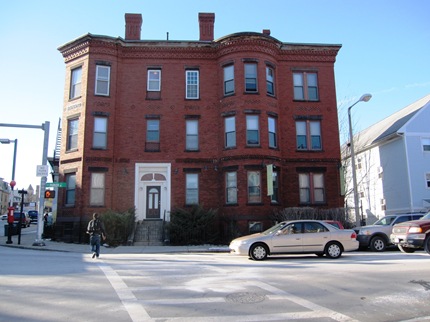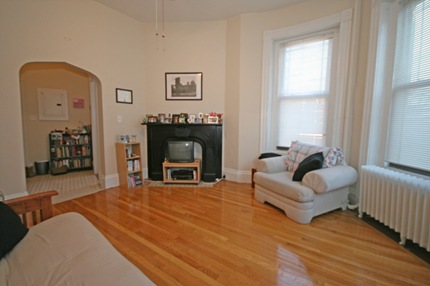Perhaps you have decided that now is the time to invest in real estate, or maybe you own a piece of income property and would like to know how much an investor would value the parcel at; this article is here to help. In this article I will explore the two most basic and commonly used income property valuation methods, first, the gross rent multiplier (GRM), and secondly, capitalization rates (cap rates).
When looking at investment property, the most important piece of advice I can give you is to remain objective! It does not matter how “cute” the property is, or if you would live in it personally. Look at the income and expenses; if they make sense and the property is in good repair then the property makes sense; keep the emotion out of the equation, your not living there.
The first and quickest way to start valuing property is the GRM. GRM is a very simple calculation that can be done in a few minutes and will give you an indication on a property’s warrantability as an investment. To calculate the GRM, you simply take price (or market value) and divide it by the annual gross income. For example, if a property is on the market for $1,000,000 and the annual gross rent is $100,000 then the GRM is 10. To effectively use GRM as a tool for evaluation in a specific market, an investor should gather a list of recently sold properties and calculate an average GRM for that area. Once you have the area average, you can use it to find fair market value of properties on and off market based on annual gross rents. For example, if the area average GRM is 8 and you are presented with a property with an annual gross rent of $60,000 then you can easily calculate the market value by multiplying $60,000 x 8 and get the value of $480,000.
Please keep in mind that GRM does not account for differences in the actual condition of the building, so a property that has had major renovations or upgrades should sell at a higher GRM then one in need of some work. Additionally, GRM varies greatly by neighborhood, so you need to get an average for each area you intend to analyze and invest in – real estate is local, even in investment property. Lastly, as a rule of thumb, the more established and desirable an area is, the higher the GRM will be and there is typically an inverse relationship between GRM and risk.
GRM=PRICE/AGI or PRICE=AGI*GRM
A quick example using 72 Calumet Street in Mission Hill, an investment property recently listed for sale.
GRM=$1,099,000/$105,600=10.4
Once you have identified a list of properties you are interested in via the GRM, the next, and more detailed analysis is to calculate the capitalization rate (or commonly referred to as the cap rate, or simply cap). A cap rate gives you the percentage return earned on your investment, if you paid for a building in full, and also represents a mechanism by which to derive (market) value for a property. Obviously, most of you will be using some type of debt service to finance your purchase, but everyone’s debt terms are different so cap rates are used to normalize the analysis. Cap rates have a lot of similar characteristics to GRM, but unlike the GRM, account for the actual expenses associated with a property. A word of caution on expenses; keep in mind when looking at public listings there is often incomplete information on expenses, and what information there is needs to be scrutinized. You should familiarize yourself with common expenses such as water, sewer, insurance, management, and taxes so that when you are looking at quoted expenses you can plug in the most realistic numbers possible. Some of these numbers are set in stone such as taxes, however some vary greatly based on your style of ownership. Moral of the story is you need to familiarize yourself with the costs associated with your style.
Now that you have done some research on expenses, you are ready to start calculating cap rates; which is actually just as simple as calculating the GRM. The first step is to get the annual gross income for a property. The annual gross income (AGI) is simply the sum of monthly rent times 12. The next step is to calculate the annual operating expenses (AOE). The typical annual operation expenses include the sum of property taxes, insurance, management, water, sewer, and maintenance and repair. Once you have AGI and AOE you can calculate your annual net income (ANI). This is done by simply subtracting AOE from AGI. Now that you have your ANI, you simply divide this by the asking price, multiply by 100 and you get your cap rate.
A quick example using 72 Calumet Street in Mission Hill:
AGI=$105,600
AOE=$22,239
ANI=AGI-AOE=$105,600-$22,239=$83,361
Cap rate= (ANI/asking price)*100= ($83,361/$1,099,000)*100=7.6
This means that if you bought this particular building, at full asking, with no debt service, you would earn 7.6% on your money.
Typically, investors buy properties with a vision for improvement. Because of this, they will often calculate two cap rates, the current cap and an expected future cap based on some planned improvement after purchase. This gives them a metric to base the cost benefit of the planned improvement.
Now that you have the basic tools to start looking at investment property, get out there, start number crunching and learn about your markets! Don’t have time? Feel free to contact me for some assistance on finding the right investment property for you or additional information on how to make these calculations.










